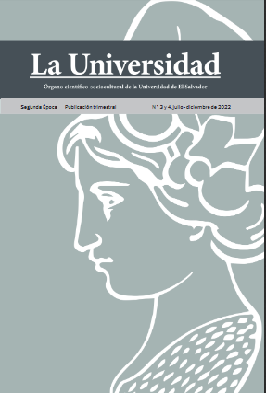¿Por qué y cómo mueren los niños con dengue?
Keywords:
Dengue, Hemorrhagic dengue, Shock, Alarming signsAbstract
Introduction: It is important to find out how the patients with dengue become critical and die, with a view to designing the mortality prevention strategies. Objective: to identify the death- associated conditions (complications and other clinical situations) as well as the specific type of damage observed in some body organs. Methods: A clinical-pathological study of 30 dead children with dengue in El Salvador was performed from 1999 to 2000. All the cases met the WHO clinical and humoral criteria for being classified as either dengue hemorrhagic fever or dengue shock syndrome. Through the analysis of daily and hourly evolution of each case, the research team identified the clinical or the clinical-humoral condition that was associated to the death of a patient. The autopsies of 8 serology- or immunohistochemistry-confirmed cases were studied. Results: In 20 (83 %) of 24 cases that died in the first three days of admission, the associated condition was hypovolemic shock, sometimes related to hemorrhage, disseminated intravascular coagulation, respiratory distress caused by non-cardiogenic pulmonary edema and multiple organ damage, all of which were recurrent shock complications rather than dengue complications. The bacterial co-infection was the most frequent condition associated to death of children with dengue after the third day of hospitalization. The autopsies showed considerable damage of liver, heart and kidneys. Conclusion: Death from dengue is generally preventable if hypovolemic shock is either prevented or treated timely and energetically using intravenously administered crystalloid preparations at the time of detecting alarming signs that would indicate the onset of clinical deterioration of the patient with dengue.
Downloads
References
Fonseca SNS: Dengue virus infection. Curr Opin Pediatr. 2002; 14(01):67-71.
World Health Organization. Dengue Haemorrhagic Fever. Diagnosis, treatment, prevention and control. Geneva: WHO; 1997. p. 1-84.
Strobel M, Lamaury I: Fievre dengue: mise au point. Rev Med Int. (Paris) 2001; 22(7):315-23.
Martínez E: Dengue y Dengue Hemorrágico. Buenos Aires:Ed Univ Quilmas; 1998. p.1-269.
Méndez A, González G. Manifestaciones clínicas inusuales del dengue hemorrágico en niños. Biomédica. 2006; 26:61-70.
Bandyopadhyay S, Lum LCS, Kroeger A. Classifying dengue: a review of the difficulties in using the WHO case classification for dengue hemorrhagic fever. Trop Med Internat Health. 2006;2(8):1238-125.
Lemus Lago ER, Estévez Torres G, Velázquez Acosta JC. Campaña por la esperanza. La lucha contra el dengue. La Habana: Editora Política; 2002. p. 91-133
Cardier JE, Mariño E, Romano E, Tayloir P, Liprandi F, Bosch N, Rothman AL. Proinflammatory factors present in sera from patients with acute dengue infection induce activation and apoptosis of human microvascular endothelialcells: possible role of TNF-alpha in endothelial cell damage in dengue. Cytokine 2005; 30:359-65.
Mairuhu ATA, MacGuillavry MR, Setiati TE, Soemantri A, ten Cate H, Brandjes DPM, van Gorp ECM. Is clinicaloutcome of dengue-virus infections influenced by coagulation and fibrinolysis? A critical review of the evidence. Lancet Infect Dis. 2003; 2:33-41.
HuangYH, Lei HY, Liu HS, Lin YS, Chen SH, Liu CC, Yeh TM. Tissue plasminoigen activator induced by dengue vírus infection of human endothelial cells. J Med Virol. 2003;79(4):610-6.
Del Valle S, Piñera Martinez M, Guasch Saent-Felix F. Hepatitis reactiva por vírus del dengue hemorrágico. Rev Cubana Med Trop. 2001; 53(1):28-31.
Neo HY, Wong RC, Seto KY, Yip JW, Yang H, Ling LH. Noncompaction cardiomyopathy presenting with congestive heart failure during intercurrent dengue viral illness: importance of phenotypic recognition. Int J Cardiol. 2006; 107(1):123-5.
Palma-da Cunha-Matta A, Soares-Moreno SA, Cardoso-de Almeia A, et al: Neurological complication arising from dengue virus infection. Neurol. 2004; 39(3):233-7.
Itha S, Kashvap R, Krishnani N, Saraswat VA, Choudhuri C, Agarwal R. Profile of liver involvement in dengue virus infection. Natl Med J India. 2005; 18(3):127-30.
Kalayanarooj S, Nimmannitya S, Eaksangsri P. Fatal cases of engue hemorrhagic fever at Children´s Hospital 1987. Bull Dept Med Serv. 1988; 14:771-8.
Thongtan T, Panyim S, Smith DR. Apoptosis in dengue virus infected liver cell lines HepG2 and Hep3B. J Med Virol. 2004;72(3):436-44.
Quaresma JA, Barros VL, Pagliari C, Fernández ER, Guedes F, Takakura CF, et al. Revisiting the liver in human yellow fever: virus- induced apoptosis in hepatocytes associated with TGF-beta, TNF-alpha and NK cell activity. Virology. 2006;345(1):22-30.
Martínez E. Dengue. Rio de Janeiro: Ed. Fiocruz; 2005. p. 187- 190.
Organización Panamericana de la Salud. Guías para la Prevención y Control del Dengue y Dengue Hemorrágico, Washington DC: OPS; 1995. (Publicación Científica 548)
Martínez E. Prevención de la mortalidad por dengue: un espacio y un reto para la atención primaria de Salud. Rev Panam Salud Publica/Pan Am J Public Health. 2006;20(1):60-74.
Downloads
Published
How to Cite
Issue
Section
License

This work is licensed under a Creative Commons Attribution-NonCommercial 4.0 International License.
Los textos académicos y científicos que se publican en la Revista La Universidad están protegidos bajo la licencia CC BY NC SA 4.0, esta permite usar una obra para crear otra obra o contenido, modificando o no la obra original, siempre que se cite al autor, la obra resultante se comparta bajo el mismo tipo de licencia y no tenga fines comerciales (https://creativecommons.org/licenses/by-nc-sa/4.0/deed.es) . El autor es el único que pose los derechos de publicación y la Revista La Universidad posee los derechos de difusión.






